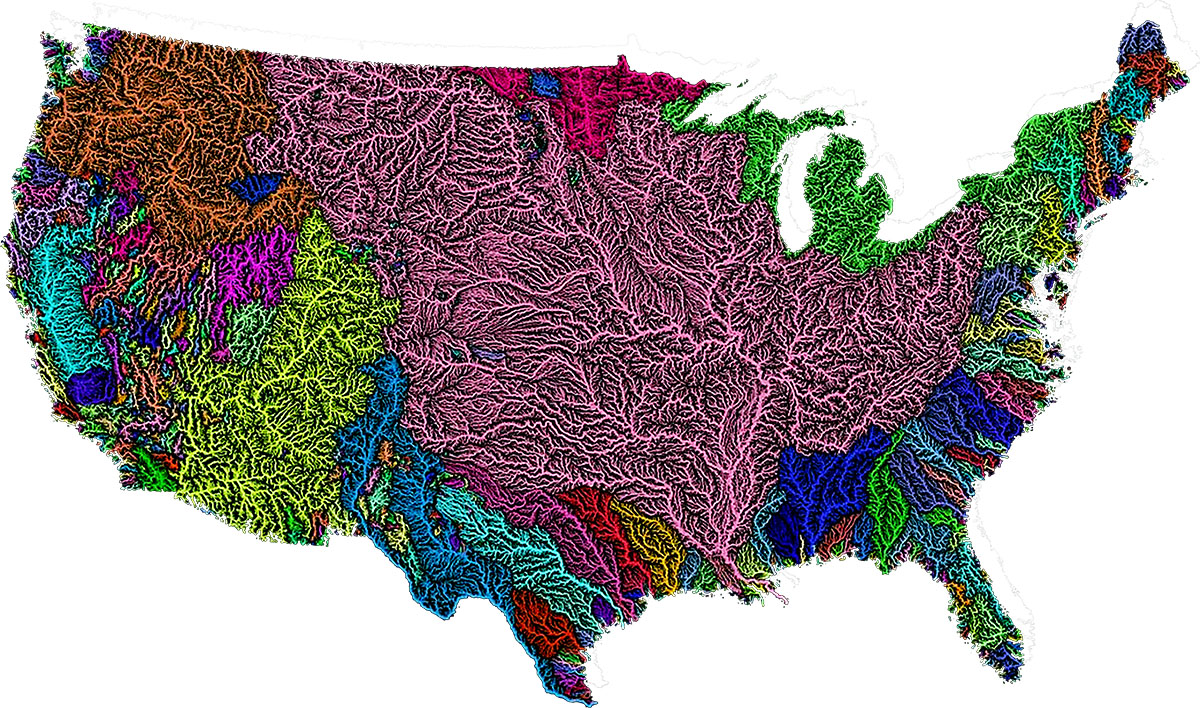WOTUS: Supreme Court
On January 18, U.S. EPA and the Army Corps of Engineers issued a final WOTUS rule that will overlap with a forthcoming U.S. Supreme Court ruling that will define jurisdictional waters under the Clean Water Act.
Under the Clean Water Act, the term “navigable waters” is defined to include “the waters of the United States, including the territorial seas.” The term defines those protected waters under various federal programs, such as water quality standards, permitting that addresses discharges of pollutants, including dredged or fill material, processes addressing impaired waters, oil spill prevention, preparedness and response programs, and water quality certification programs.
However, “waters of the United States,” or “WOTUS,” itself is not defined in the Clean Water Act. How the term is interpreted has great implications for development projects that seek to utilize property near jurisdictional waters and which may result in the need to obtain federal permits.
Over the years, EPA and the Army Corps of Engineers have conducted various rulemakings to define WOTUS, but these efforts have remained a battleground with the determination of whether certain waters, including those adjacent to water bodies, qualify as jurisdictional waters being a major point of contention. The definition has been the subject of litigation during its history, with the Supreme Court attempting to address the complex and elusive term in 1985 (United States v. Riverside Bayview Homes), 2001 (Solid Waste Agency of Northern Cook County v. U.S. Army Corps of Engineers, or “SWANCC” decision) and 2006 (Rapanos v. United States).
The EPA/Corps’ current rulemaking seeks to apply two competing Rapanos-era tests, namely a “continuous surface connection” test focused on the presence of “relatively permanent” waters and the “significant nexus” test, which provides for a more tenuous connection to traditional waters, and as a result, a much broader standard for determining jurisdictional waters.
The U.S. Supreme Court is currently considering these issues in Sackett v. EPA, with many observers convinced that the Court will scrap or restrict the significant nexus test based upon the Justices’ comments and questions at argument.
While the full extent to which the decision will impact the new WOTUS rule remains uncertain, rejection of the significant nexus test would significantly undermine at least part of the rule.
A variety of parties, including industry groups and certain states, have challenged the WOTUS rule immediately upon issuance, arguing that it creates an ambiguous legal standard. Moreover, GOP lawmakers are challenging the rulemaking under the Congressional Review Act, seeking to rescind the rule. Although the House voted to approve the resolution, the Biden Administration has vowed to veto the CRA challenge should it make it to the President’s desk.
The next several months until the U.S. Supreme Court issues its ruling will continue to see heightened political attention and legal challenge.
In the meantime, the WOTUS rule became effective on March 20, 2023, although there are regional injunctions against it.

WOTUS: Administration
A federal judge in North Dakota has temporarily blocked the implementation of the Biden administration’s controversial “Waters of the United States” (WOTUS) rule, granting the request of a coalition of 24 states and more than a dozen industry groups.
On Dec. 30, the Environmental Protection Agency (EPA) announced its final “Revised Definition of Waters of the United States” rule, broadening what types of water sources were subject to federal regulation under the Clean Water Act.
In the April 12 injunction, U.S. District Judge Daniel L. Hovland held that the plaintiff states had successfully demonstrated that the new rule “poses a threat” to their sovereignty and amounts to “irreparable harm.”
“One of the purposes of a preliminary injunction is to preserve the status quo,” Hovland wrote. “The ripple effects caused by the 2023 Rule strongly favor maintaining the status quo for now. The Court finds that a far broader segment of the public would benefit from a preliminary injunction because it would ensure that federal agencies do not extend their power beyond the express delegation from Congress.”
Further noting that the matter was also being weighed by the Supreme Court in a similar case, the judge held, “Common sense dictates that it only makes sense to wait.”
West Virginia Attorney General Patrick Morrissey, who led the states’ challenge to the rule, said the judge’s ruling marked a victory for states’ rights.
“This is a victory for the states because this rule, if allowed to be implemented, will upset the balance of power between the states and the federal government without clear statement from Congress,” Morrisey said in a statement. “It’s a decades-long effort by the EPA to regulate purely intrastate waters without the explicit consent of lawmakers. It creates unneeded delays and costs for farmers, contractors, ranchers, and anyone who cares about economic activity.
“You cannot regulate a puddle as you do a river, and doing so will never give us cleaner water, which is what we all want,” he added. “This rule would harm jobs and economic growth by taking jurisdiction from states and asserting federal authority over nearly any body of water, including roadside ditches, short-lived streams, and many other areas where water may flow only once every 100 years.”
Other states involved in the lawsuit include North Dakota, Georgia, Iowa, Alabama, Alaska, Arkansas, Florida, Indiana, Kansas, Louisiana, Mississippi, Missouri, Montana, Nebraska, New Hampshire, Ohio, Oklahoma, South Carolina, South Dakota, Tennessee, Utah, Virginia, and Wyoming.
An additional 18 intervenor-plaintiffs have also joined the suit, including such groups as the American Farm Bureau Federation, National Association of Realtors, National Cattleman’s Beef Association, National Mining Association, and the Public Lands Council.
A similar injunction granted in March by a federal judge in Texas has already blocked the rule’s enforcement in Texas and Idaho.
The latest ruling also comes less than a week after President Joe Biden’s veto of a joint resolution of the House and Senate that would have repealed the controversial rule.
“I just vetoed a bill that attempted to block our Administration from protecting our nation’s waterways—a resource millions of Americans depend on—from destruction and pollution,” Biden wrote on Twitter.
“Let me be clear: Every American has a right to clean water,” he added. “This veto protects that right.”
But House Speaker Kevin McCarthy (R-Calif.) disagreed with that assessment, writing: “Incorrect. Biden’s overreaching WOTUS rule jeopardizes the livelihoods of American farmers and small businesses.”
On April 5 the EPA said in a statement that it was reviewing the court’s decision but stood by the new regulations as the “best” interpretation of the Clean Water Act.
“The agencies remain committed to establishing and implementing a durable definition of ‘waters of the United States’ informed by diverse perspectives,” the agency said. “Our goal is to protect public health, the environment, and downstream communities while supporting economic opportunity, agriculture, and industries that depend on clean water.”
Source section 1—ralaw.com; section 2—Samantha Flum, Nathan Worcester, epochtimes.com













